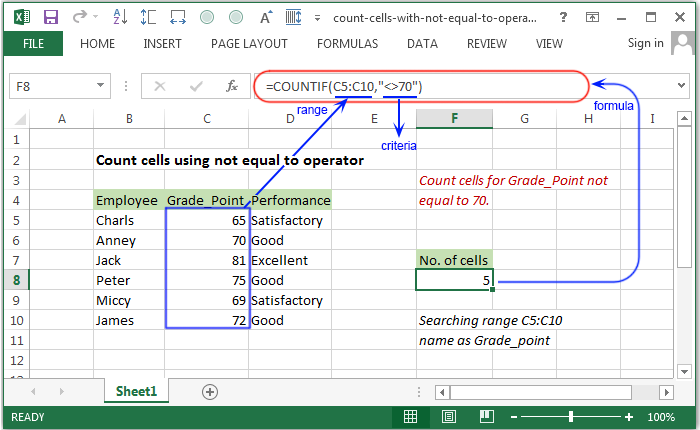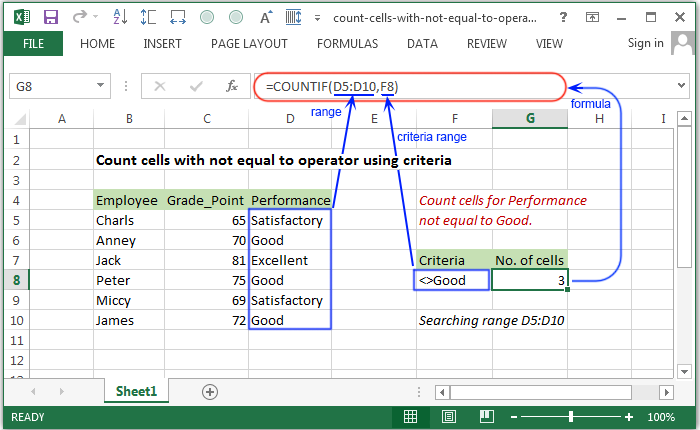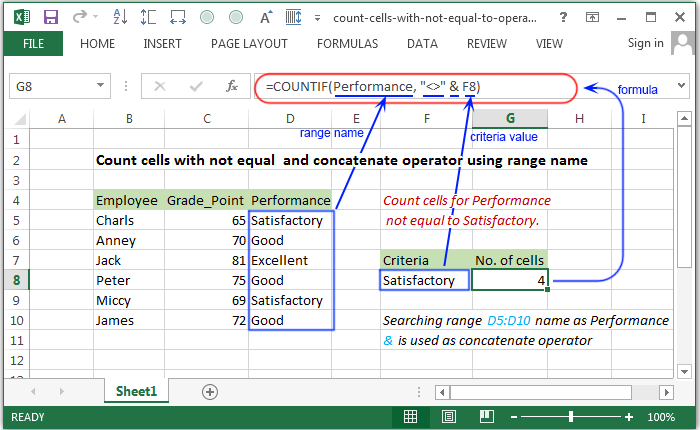Excel Formulas - Count cells using not equal to operator
Count cells using not equal to operator

Syntax of used function(s)
COUNTIF(criteria_range, criteria)
Explanation
To count the number of cells from a cell range for a specific criteria using not equal to operator the COUNTIF function can be used.
Formula
=COUNTIF(C5:C10,"<>70")
How the formula works
In the above example COUNTIF search the grade point of the employees from the range C4:C10 who achieved grade point other than 70 and counts and return the result.
Count cells with not equal to operator using criteria

Explanation
To count the number of cells from a range name for a specific criteria using less than or equal operator the COUNTIF function can be used.
Formula
=COUNTIF(D5:D10,F8)
How the formula works
In the above example the COUNTIF function search the performance of employees from the range D5:D10 whose performance is not equal to "Good".
The criteria is a variable and written in the cell F8. The COUNTIF function then count the number of secified performance matching in the range and return the result.
Count cells with not equal to and concatenate operator using range name

Explanation
To count the number of cells from a range name for a specific criteria value and an operator, the COUNTIF function can be used.
Formula
=COUNTIF(Performance, "<>" & F8)
How the formula works
In the above example the COUNTIF function search the performance of the employees from the range name "Performance" against a particular criteria using not equal to operator. The criteria is a variable and contain in cell F8. The not equal to operator and the criteria variable have been concatinated by the operator &.
Previous: Excel Formulas - Count cells which are equal to each value of a given range
Next:
Excel Formulas - Count cells between numbers
